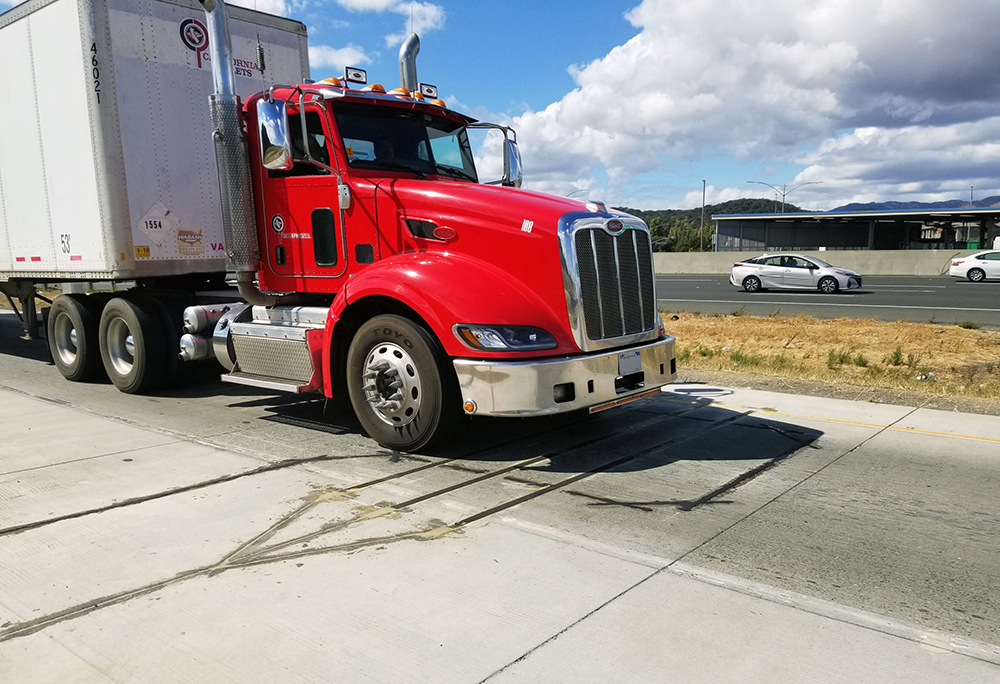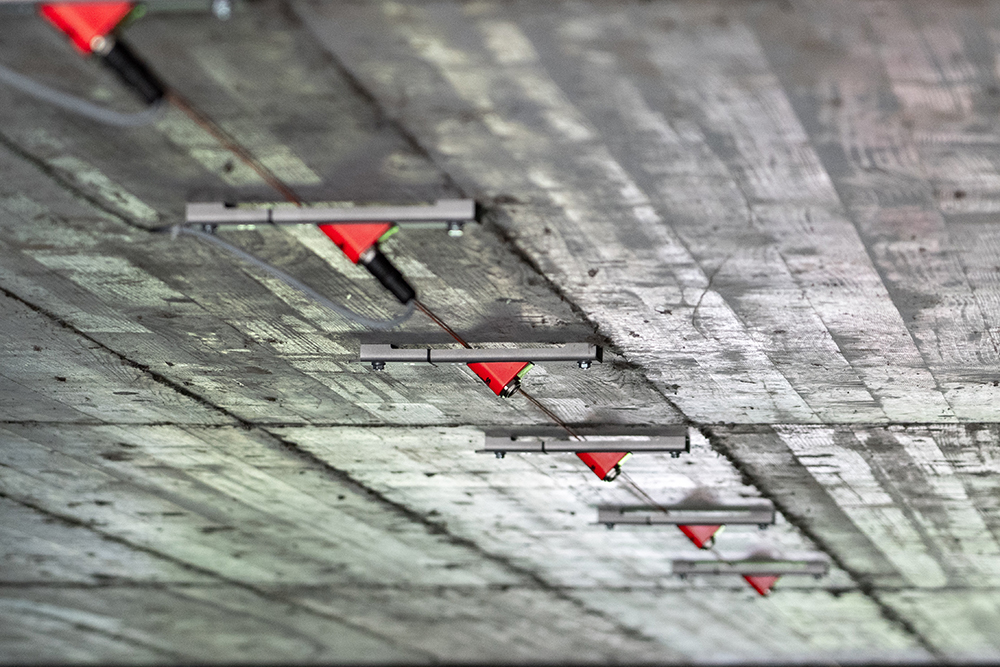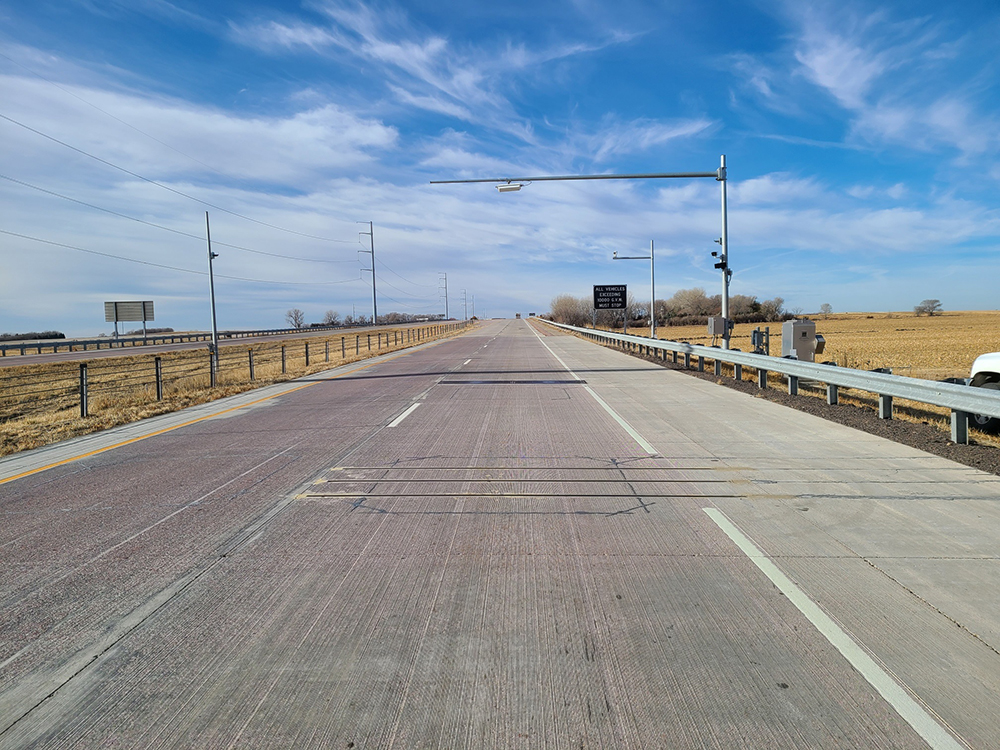
Weigh in Motion (WiM) data can be used for a variety of different applications. Among these is company profiling – the process of identifying firms which persistently break the rules.
In a standard weight enforcement process, every violating vehicle – driver and/or owner - is prosecuted individually. Company profiling seeks to do something slightly different. All data measured by a WiM network, including pictures of suspiciously overloaded vehicles, is stored in a database which enforcement agencies can use. “This action may vary from sending a warning letter, to a visit of the company for an inspection or further legal action,” explains the International Society for WiM (ISWiM) in its Guide for Users of Weigh in Motion. “The advantages of this way of enforcement are that the enforcement activities are directly aimed at compliance with loading regulations, i.e. preventive or incentive activities instead of writing the tickets.”
Since it is targeted, relatively few enforcement personnel are needed too – and the effect of the enforcement efforts “is nationwide and not limited to the roads directly around the WiM systems”, ISWiM points out.
Andy Lees, Q-Free WiM consultant who is also vice president of ISWiM and chair of the ISWIM Vendors and Consultants College, explains: “Company profiling is usually employed by the enforcement authorities using high-speed WiM enforcement or pre-selection sites. Typical examples would be companies identified with the use of WiM enforcement sites, which contain in-road sensors and arrays along with ANPR/ALPR cameras. The WiM system enables the authorities to identify individual vehicles and their associated companies.”
Persistent infringement
It is not unknown for a company to persistently infringe weights and through this identification process they can be readily identified. “Usually, this process works with infringement penalties being issued initially but if this becomes commonplace with an individual haulier then prohibition notices can be issued,” Lees reasons. “This effectively stops the haulier operating.”

So company profiling is a useful tool: while many companies comply very well with existing laws and regulations, a few might systematically violate maximum truck weight restrictions to gain a competitive advantage, points out Christoph Klauser, Kistler business development, traffic solutions. “As the freight forwarding market is very competitive, freight forwarders can be under huge price pressure and might tend to violate existing weight limits to be able to offer lower prices,” he says. “This is unfair competition and might force compliant freight forwarders to also exceed weight limits. The invoice of this vicious circle of overloaded vehicles is finally paid by the road infrastructure, which deteriorates much faster than expected under the illegally increased traffic load.”
Protecting the integrity of the road surface is among the key reasons for company profiling using WiM. “To break this vicious circle of overloading, it is important to not only identify single trucks and drivers, but also to have a broader look at the companies behind the single violations,” Klauser continues. “Once such companies which do systematic overloading are identified, further legal measures can be taken such as disgorgement for unlawfully generated profits. This shall finally motivate all freight forwarders to comply with given weight limits and therefore protect our road infrastructure.”
Rish Malhotra, president & CEO of IRD, says enforcement agencies have been trying to improve safety and weigh station efficiency since IRD installed its first WiM bypass systems in the early 1980s.
In the US, the Federal Motor Carrier Safety Administration (FMCSA) maintains records and provides easy access to carrier-related safety data, which means a third party can search the Safer database using the carrier’s name, USDoT or motor carrier details.
“Enforcement authorities can correlate WiM data with Safer information - and sometimes other government databases - to select and directly warn the carriers/owners of non-compliant commercial vehicles,” Malhotra explains.
Data correlation
As a system integrator, IRD enables the data correlation and adds other criteria to screen in real time via a multi-input approach. “Enforcement agencies have been interested in screening for other safety concerns besides overweight trucks, including underinflated tyres, over-dimension vehicles, vehicles carrying hazardous materials, and vehicles with expired inspection status,” Malhotra says. “IRD has developed pre-screening subsystems, including our Tire Anomaly and Classification System (TACS), an AI-powered CVSA decal reader system, and Lidar and machine vision solutions to assist the agencies in meeting their goals.”
Matija Mavrič, head of sales and marketing at Cestel, agrees that company profiling is an interesting concept for safeguarding infrastructure which can fit very well into a country's overall road protection strategy. However, Cestel produces portable bridge WiM systems so has a slightly different take on the subject.
“Our experience in Slovenia and other countries shows that motorways, which are usually the focal point of WiM installations, are not the most problematic roads when it comes to overloading,” suggests Mavrič. “This is due to the fact that a large portion of heavy goods vehicles driving on motorways are either in transit or are travelling from other countries, and these vehicles usually abide by the regulations. By far the most vulnerable roads are local roads, which were not designed for high traffic loads and are almost completely unmonitored since local authorities do not have the financial means that would allow them to install WiM systems, and state authorities do not place such a high priority on local infrastructure.”
And this local environment is where company profiling comes into play, says Mavrič. If you can identify local sources of overloaded vehicles (e.g. from quarries, construction sites, garbage dumps or lumber mills) it can have a tremendous impact on a local community and the quality of infrastructure: whether this is done through a road damage calculation mechanism - where the offending party pays for the damage caused by its HGVs, this is calculated from WiM data - or through a public list of companies that are consistently violating loading regulations, it is up to the infrastructure owners.
Practical limitations
“This 'soft approach' is a great alternative to direct enforcement, which is, in principle, the gold standard for WiM, but it does have practical limitations,” continues Mavrič. “Direct enforcement WiM systems are expensive; it is expensive to maintain them, and there are many legal aspects that need to be resolved, so infrastructure owners usually install them in limited numbers on motorways or other important road sections.”
Therefore the best approach, he thinks, is to install permanent direct enforcement WiM stations on important road sections and monitor the rest of the network with portable WiM systems.
In 2021, VanJee delivered a comprehensive WiM direct enforcement municipal system in Changde, Hunan China, connecting 72 direct enforcement WiM sites and 10 local weighing stations as well as 20 companies’ weighing stations into the central WiM management platform.

“Therefore, the platform provides necessary and sufficient overloaded enforcement evidence for local authorities including vehicles' picture, weights, plate number, time and location,” says VanJee WiM chief scientist Wang Ping: “The local authority would get overloaded company profiling by searching specific truck plate numbers and violation records to improve WiM enforcement efficiency.”
IRD has recently incorporated highly-accurate WiM and advanced screening sub-systems in projects in California and South Dakota. “Caltrans uses TACS, the CVSA decal reader system, and an automated weigh station system at the Cordelia weigh station,” says Rish Malhotra of IRD. “South Dakota DoT has multiple ports of entry (POEs) with IRD systems for identifying vehicles using AVI and LPR and looking up the carrier’s information in SAFER and other databases.”
To bypass a POE, the vehicle or carrier must not be subject to an out-of-service order or revocation, have a valid registration, not have a suspended IRP or IFTA account, have a satisfactory ISS/2 safety score - and not exceed the registered gross vehicle weight (GVW) by more than 5%. SDDoT POEs also incorporate screening technologies such as TACS, over-dimension detection, and infrared brake inspection.
“These preclearance systems are highly automated and can direct non-compliant vehicles to report for inspection, manage their movement through the weigh station, and generate referrals for citations,” Malhotra concludes. “In the future, we expect to see even more automated enforcement, back-office systems to create citations, and possibly the application of special screening rules for repeat offenders.”
Degrading infrastructure
In Slovenia, the state uses a concept, similar to company profiling, called ‘road damage compensation’. This is used when dealing with exceptional transports and local sources of overloaded traffic, and is based on methodology devised by the Slovenian National Building and Civil Engineering Institute (Zag Ljubljana).
“They calculated a monetary value of 1 ESAL [equivalent single-axle load] of overloading, which gives the state a mechanism to demand payment from the companies whose HGVs caused damage,” explains Matija Mavrič at Cestel. “In the newest version of the Slovenian Roads Act, which just came out, there will also be a possibility of demanding payment from overloaded HGVs in regular traffic.”
It is left to Andy Lees of Q-Free and ISWiM to sum up the case for company profiling. “Illegal operation of heavy goods vehicles can, in summary, shorten the life of infrastructure, degrade the quality of travel and increase costs of operation and maintenance,” he begins. “Protecting the road assets is fundamental to economic stability, growth and the social well-being of a region. Overloaded trucks pose serious threats to road transport operations, with increased risks for road users, deterioration of road safety, severe impacts on the durability of infrastructure (pavements and bridges) and are considered an environmental hazard.”
Economic issues are also a factor, with overloading leading to large distortions in freight transport competition between transport modes (e.g. rail, waterborne and road) and between road transport companies and operators.
“For example, in one European country, it was estimated that a 5-axle articulated truck, operating at 20% overload all year round, generated an additional €25,000 benefit per year,” Lees adds. “Company profiling can identify operators who persistently attempt this type of operation.”





